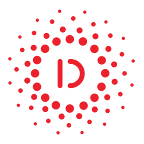What are OOH and DOOH ?
Out-of-home (OOH) advertising, also called outdoor advertising, outdoor media, and out-of-home media, is advertising experienced outside of the home. This includes billboards, wallscapes, and posters seen while “on the go;” it also includes place-based media seen in places such as convenience stores, medical centres, salons, and other brick-and-mortar venues.
OOH advertising formats fall into four main categories: billboards, street furniture, transit, and alternative. The OOH advertising industry in the United States includes more than 2,100 operators in 50 states representing the major out of home format categories. These OOH media companies range from public, multinational media corporations to small, independent, family-owned businesses.
Currently, the United Kingdom and France are Western Europe’s first and second largest markets for OOH, respectively. Data from Outsmart (formerly the Outdoor Media Centre), the UK’s out-of-home advertising trade association, shows that digital out-of-home (DOOH) grew at a 29.7% CAGR from 2009 to 2014.
Billboard advertising is a traditional OOH advertising format, but there has been significant growth in digital OOH (digital billboards and place-based networks) in recent years. For example, about 4,900 digital billboard displays have been installed in China and the US.
Traditional billboards remain the predominant form of OOH advertising in the US with 66% of total annual revenue. Today, billboard revenue is 73% local Ads, 18% national Ads, and 9% public service Ads.
Street furniture is made up of formats such as bus shelters, news racks, mall kiosks, and telephone booth advertising. This form of OOH advertising is mainly seen in urban centres. This form of advertising provides benefits to communities, as building and maintaining the shelters people use while waiting for buses.
Digital out-of-home (DOOH) refers to dynamic media distributed across place-based networks in venues including, but not limited to: cafes, grocery stores, bars, restaurants, health clubs, colleges, arenas, gas stations, convenience stores, barber shops, airports and public spaces.
PQ Media defines DOOH by two major platforms, digital place-based networks (DPN) and digital billboards & signage (DBB); DOOH networks typically feature independently addressable screens, kiosks, jukeboxes and/or jumbotrons. DOOH media benefits location owners and advertisers alike in being able to engage customers and/or audiences and extend the reach and effectiveness of marketing messages. It is also referred to as digital signage.
Within the DOOH industry, advertisements may be purchased through programmatic platforms. Programmatic platforms ask marketers to specify desired audience characteristics and automatically locate the media vehicles to deliver that audience. These platforms may allow buyers (the demand side) to plan, execute and monitor campaigns across multiple media platforms (the supply side) using a familiar workflow. A major difference between programmatic digital out-of-home (pDOOH) and traditional OOH or DOOH is that programmatic automates the process of buying, selling and delivering inventory across multiple screens with enhanced capabilities.
These enhanced capabilities include the creation of measurable, highly-targeted campaigns by utilizing geolocation data to activate the best DOOH screens in real-time based on consumer behaviour and audience movement patterns. Additionally, programmatic allows buyers to set specific parameters or conditions (also known as triggers) for a campaign or inventory and unleash the potential to power campaigns with unlimited data sets from a myriad of data sources. Only when the selected conditions are met will an ad or content be served onto the screen.
